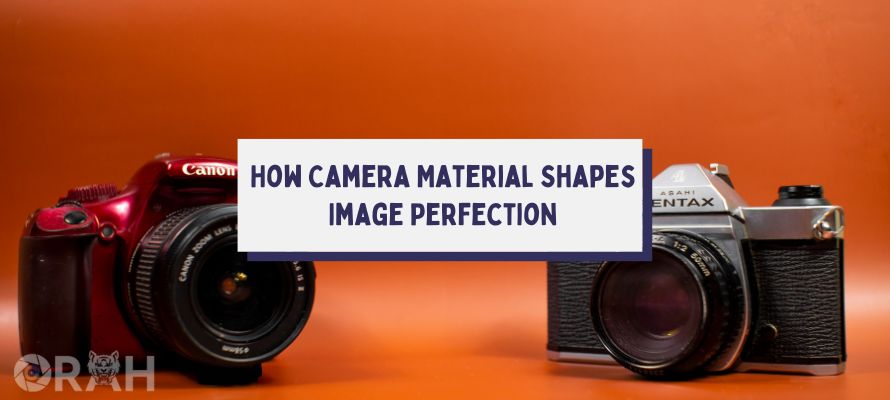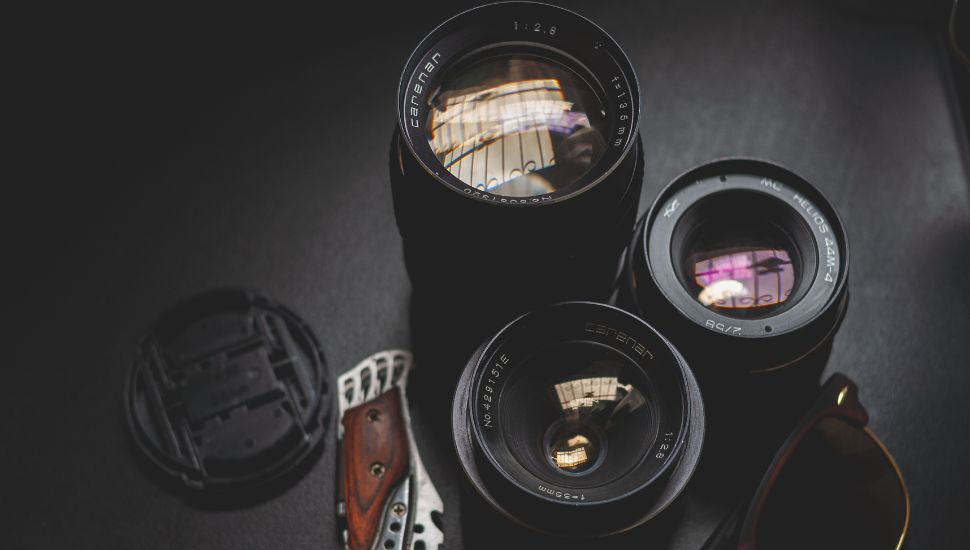
When it comes to photography, image quality is of utmost importance. The camera material plays a crucial role in determining the overall quality of the images captured.
The choice of camera material can significantly impact factors such as sharpness, color accuracy, noise levels, and dynamic range.
Therefore, it is essential to understand how different camera materials affect image quality and choose the right material for your photography needs.
The camera material affects image quality in several ways. Firstly, it determines the durability and build quality of the camera, which can impact its performance and longevity.
A well-built camera with high-quality materials is likely to provide better image quality and withstand the rigors of professional use.
On the other hand, a camera made with inferior materials may not deliver the same level of performance and may not last as long.
Secondly, camera materials can affect the weight and ergonomics of the camera, which can impact the photographer’s ability to handle and operate the camera effectively.
A lightweight camera made with durable materials can be easier to carry around and use for extended periods without causing fatigue.
This can result in better image quality as the photographer can focus more on capturing the perfect shot rather than struggling with a heavy or uncomfortable camera.
The Role of Camera Materials in Image Processing
Camera materials also play a significant role in image processing. The sensor inside the camera captures light and converts it into digital information, which is then processed to create the final image.
The material used for the sensor can affect its sensitivity to light, dynamic range, and noise levels.
Different camera materials affect image processing differently. For example, cameras with larger sensors tend to have better low-light performance and higher dynamic range compared to cameras with smaller sensors.

This is because larger sensors can capture more light, resulting in less noise and better overall image quality.
Similarly, the material used for the sensor’s micro-lenses can also impact image quality. Micro-lenses help direct light onto the sensor, and different materials can affect their efficiency.
For example, cameras with micro-lenses made from high-quality glass can provide better light transmission and sharper images compared to cameras with plastic micro-lenses.
The Impact of Camera Body Material on Image Quality
The camera body material also plays a crucial role in image quality. The body material affects factors such as vibration dampening, heat dissipation, and overall stability, which can impact image sharpness and clarity.
Different camera body materials affect image quality differently. For example, cameras with magnesium alloy bodies tend to have better vibration dampening properties compared to cameras with plastic bodies.
This can result in sharper images, especially when shooting handheld or in low-light conditions.
Additionally, the material used for the camera body can also affect its ability to dissipate heat. Cameras that tend to overheat may experience increased noise levels and reduced image quality.
Therefore, choosing a camera with a body material that has good heat dissipation properties can help maintain optimal image quality even during extended shooting sessions.
The Effect of Lens Material on Image Quality
The lens material is another critical factor that affects image quality. The lens is responsible for focusing light onto the camera sensor, and different lens materials can impact factors such as sharpness, color accuracy, and distortion.
The choice of lens material can significantly impact image quality. For example, lenses made with high-quality glass elements tend to provide better sharpness and color accuracy compared to lenses made with lower-quality materials.

High-quality glass elements can minimize aberrations and distortions, resulting in sharper and more accurate images.
Additionally, lens coatings also play a crucial role in image quality. Different lens coatings can reduce flare, ghosting, and other optical imperfections that can degrade image quality. Therefore, choosing lenses with high-quality coatings can help improve overall image quality.
Comparing Image Quality of Different Camera Materials
When comparing image quality between different camera materials, it is essential to consider factors such as sensor size, sensor technology, lens quality, and image processing capabilities.
These factors can vary significantly between different camera models and brands, regardless of the camera material used.
For example, a camera with a larger sensor size may provide better image quality compared to a camera with a smaller sensor size, regardless of the camera material used.
Similarly, a camera with advanced image processing capabilities may produce better results compared to a camera with similar materials but less advanced processing technology.
It is also important to note that image quality is not solely determined by the camera material. Other factors such as lens quality, lighting conditions, shooting technique, and post-processing also play a significant role in the final image quality.
Therefore, it is crucial to consider the overall system and how different components work together to achieve optimal image quality.
Factors to Consider When Choosing a Camera
When choosing a camera material, there are several factors to consider that can impact image quality. These factors include:
- Sensor Size: As mentioned earlier, the sensor size can significantly impact image quality. Larger sensors tend to provide better low-light performance, higher dynamic range, and less noise compared to smaller sensors.
- Sensor Technology: Different sensor technologies can also affect image quality. For example, back-illuminated sensors tend to provide better low-light performance compared to front-illuminated sensors.
- Lens Compatibility: The choice of camera material should also consider lens compatibility. Some camera systems have a wider range of high-quality lenses available compared to others, which can impact the overall image quality.
- Image Processing Capabilities: The camera’s image processing capabilities can also affect image quality. Cameras with advanced processing algorithms and features such as in-camera noise reduction and lens correction can produce better results compared to cameras with less advanced processing capabilities.
- Ergonomics and Handling: The camera’s ergonomics and handling can impact the photographer’s ability to capture the perfect shot. A comfortable and well-designed camera can result in better image quality as the photographer can focus more on composition and technique.
The Relationship Between Camera Material and Price
The choice of camera material can also impact the price of a camera. Cameras made with high-quality materials such as magnesium alloy tend to be more expensive compared to cameras made with plastic or lower-quality materials.
When considering the relationship between camera material and price, it is important to find a balance between image quality and budget.
While cameras made with high-quality materials may provide better image quality, they may not always be necessary for every photographer’s needs.

It is essential to assess your photography needs and budget to determine the right camera material for you.
For example, if you are a professional photographer who requires the highest level of image quality and durability, investing in a camera made with high-quality materials may be worth the extra cost.
However, if you are an amateur photographer or have budget constraints, there are still plenty of options available that can provide excellent image quality without breaking the bank.
The Future of Camera Materials in Image Quality
Camera materials are constantly evolving, driven by advancements in technology and consumer demands.
In recent years, we have seen the introduction of new materials such as carbon fiber and titanium in camera bodies, which offer improved strength-to-weight ratios and durability.
In terms of sensor technology, we have seen advancements such as back-illuminated sensors, which have become more common in high-end cameras.
These sensors allow for better light gathering capabilities, resulting in improved low-light performance and overall image quality.
Lens materials are also evolving, with manufacturers experimenting with new glass compositions and coatings to improve optical performance.
Additionally, advancements in lens manufacturing techniques such as aspherical elements and multi-element designs have also contributed to improved image quality.
As technology continues to advance, we can expect further improvements in camera materials and their impact on image quality.
This includes advancements in sensor technology, lens materials, and overall camera design. These advancements will likely result in even better image quality and performance for photographers.
Tips for Maximizing Image Quality with Your Camera Material
Regardless of the camera material you choose, there are several tips you can follow to maximize image quality:
- Use High-Quality Lenses: Invest in high-quality lenses that are compatible with your camera system. Lenses play a crucial role in image quality, so it is worth investing in the best lenses you can afford.
- Shoot in RAW: Shooting in RAW format allows for more flexibility in post-processing and can help preserve image quality. RAW files contain more information compared to JPEG files, allowing for better adjustments and corrections.
- Pay Attention to Lighting: Lighting conditions can significantly impact image quality. Pay attention to the direction, intensity, and quality of light when capturing your images. Use natural light whenever possible or invest in external lighting equipment for more control over the lighting conditions.
- Use a Tripod: Using a tripod can help eliminate camera shake and ensure sharper images, especially when shooting in low-light conditions or using longer shutter speeds.
- Learn Post-Processing Techniques: Post-processing can help enhance image quality and correct any imperfections. Learn post-processing techniques such as exposure adjustments, color correction, and noise reduction to get the most out of your images.
How to Protect Your Camera
Using a protective case is an essential way to safeguard your camera and maximize its lifespan. Cases provide cushioning that prevents scratches and damage from everyday bumps and drops. This protects against costly repairs or early replacement.
Cases also shield cameras from more serious impacts. Should your camera accidentally fall from a table or out of a bag, the case will absorb some of the force to minimize potential internal damage. This protective layer can save you from expensive fixes.

Weather resistance is another key benefit. Many cases are designed to withstand rain, snow, dust and other elements.
This allows photographers to shoot confidently in challenging outdoor conditions without worrying about moisture or environmental damage to equipment.
Grip and handling are improved as well. Textured surfaces and rubberized materials provide a sturdier hold to reduce accidental drops.
This is particularly useful for those with large hands or when conditions are less than ideal. Better stability also helps when shooting handheld for extended periods.
The Material Matters
The material used to construct a camera case is an important consideration that impacts its protective abilities and durability.
Case manufacturers utilize a variety of materials engineered to shield cameras from different hazards while balancing attributes like weight and cost.
Choosing the right material is key to ensuring a case can withstand the rigors of field use and safeguard expensive equipment over the long run.
Two prevalent materials for camera cases are plastic and rubber. Plastic cases are lightweight yet rigid, using hard shells to guard against impacts from falls or bumps.
However, they offer less cushioning than softer materials. Rubber cases provide excellent padding through their elasticity but can be heavier. They also withstand water immersion better than most plastics.
Another popular option is ballistic nylon, a fabric renowned for strength and puncture resistance. Often reinforced with padding inside, nylon cases protect against knocks while staying lightweight.
They also resist abrasions that could wear away other materials over time. For extreme conditions, manufacturers incorporate materials like carbon fiber and Kevlar fiber to deliver ultra-durable cases at increased weight.
The interior lining also influences a case’s performance. Foam padding helps disperse impact forces on drops to reduce stress on cameras.
Thick padding adds impact protection but makes cases bulkier. Thinner padding trims size while still preventing scratches. Thermal insulation keeps contents safe in very hot or cold environments too.
Conclusion:
In conclusion, the choice of camera material plays a crucial role in determining image quality. Different camera materials affect image quality in various ways, including sensor performance, lens compatibility, body stability, and overall durability.
When choosing a camera material, it is important to consider factors such as sensor size, lens compatibility, image processing capabilities, and overall ergonomics.
Additionally, it is essential to find a balance between image quality and budget, as high-quality camera materials can significantly impact the price of a camera.
By understanding the impact of camera materials on image quality and following the tips for maximizing image quality, photographers can make informed decisions and achieve optimal results with their chosen camera material.
With advancements in technology, we can expect further improvements in camera materials and their impact on image quality in the future.